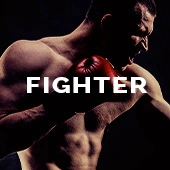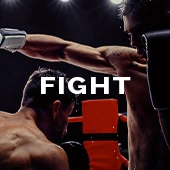Not all unbeaten fighters are the same. Just because a fight is sold as a battle of unbeatens does not mean it is a fair fight, or even one that should be happening. In fact, often when a fight is sold as such, as a battle of unbeatens, it is done so because there are no other or better ways for it to be sold.
That was certainly the case on Sunday (June 8) with the IBF cruiserweight title fight between Jai Opetaia and Claudio Squeo. Combined, the pair brought to the ring a 44-0 record, with Opetaia unbeaten in 27 fights, and Squeo unbeaten in 17, but the devil, as always, is in the details.
On Opetaia’s record there were several noteworthy wins, including two over Mairis Briedis, whereas on Squeo’s record highlights were conspicuous by their absence. Not only that, Squeo had yet to box outside Italy, his homeland, and his greatest achievement to date was winning an IBF “European” title, whatever that means. In other words, although the 17-0 Squeo record looked pretty enough on paper, the man from Puglia followed a long tradition of Italian boxers who built their record at home before then stepping up in class – more accurately, leaping – in their thirties, typically when it is too late.
By the time he arrived in Broadbeach, Australia, to fight Opetaia, Squeo was 34, yet still considered ill-prepared and green. He got the shot at Opetaia, the IBF champion, not because he had organically worked his way towards it, and beaten various contenders, but simply because he had won a fringe IBF title – the aforementioned “European” belt – and brought to the fight a style Opetaia rather fancied dismantling. Ranked at 14 by the IBF, they could just about get away with it, too.
The only hope on fight night is that the fight does at least become a fight. Even if it is a mismatch, both on paper and then in reality, the best-case scenario is that the underdog goes down having given it their best effort and tried to defy the odds.
In respect of Squeo, we can say that much. By far the smaller man, he had only one way to fight, and only one way to win the fight, and he both accepted this and acted on it from the first round. Coming forward, and moving his head, Squeo wanted his diminutive size to become an advantage and he wanted to have Opetaia frustrated when teeing off. He was also able to maraud beneath the eyeline of Opetaia, which, especially in round two, caused the Australian one or two minor issues. This was the result of Squeo coming in low and Opetaia, with his back to the ropes, taking it for granted that he would be able to smother and control the Italian up close. Sometimes he was right, and he did, but occasionally Squeo managed to get through with one or two shots.
He had some fleeting success in round three as well, a round in which Squeo landed solid right hands on three separate occasions. Opetaia, the open target, was never budged by these punches, but they were warning signs nonetheless. They reminded him that there was another fighter in the ring and that this fight, although a mismatch, would not win itself. He had to go out there and assert his dominance.
In fairness to Opetaia, that’s exactly what he did in the third, perhaps in answer to those right hands. Bit by bit, Opetaia started to push Squeo on to the back foot and he took control, piercing his guard with southpaw left crosses and punishing him with counter right hooks whenever Squeo lunged in with his own left. One particular shot, a right uppercut in close, triggered Squeo to immediately initiate a clinch; the first real sign that he was starting to feel the power.
This pattern continued into the fourth round and it was in that round that Opetaia smacked a left uppercut into Squeo’s body and caused the challenger to take a knee. The shot, at first, appeared to have strayed low, only we later came to realise that it had in fact landed on Squeo’s solar plexus and that the foul for which Opetaia had been reprimanded by Robert Hoyle, the referee, had more to do with him pulling Squeo on to the punch with his right glove. Either way, the punch itself hurt Squeo, quite clearly, and afterwards Opetaia was merciless in his desire to reach that spot again.
When he wasn’t hitting Squeo’s body, Opetaia would then give him just enough space for him to launch an attack of his own, at which point he would step back and cleverly pick his counter. This he did to great effect in round five when he backed Squeo into a corner, waited for him to make a mistake, and finally cracked him with a right hook counter to the jaw.
The second the shot landed, one could tell Squeo had never felt that kind of power or impact before. It may or may not have broken his jaw – signs suggested that was the outcome – but what was undeniable, based on his delayed reaction to it, was that Squeo had had enough. Down on one knee, he decided to stay there rather than get up and take any more. The fight was therefore waved off 30 seconds into round five.
“Man, I was just in a rush,” said Opetaia afterwards, the implication being that this fight was one to get out of the way. “I just really wanted to get it done.
“We did what we had to do. We’ve got a lot more to go. I’m chasing these unification fights and I’m chasing these world champions.”
When it comes to world champions, the champion many would like to see Opetaia fight next is Mexico’s Gilberto “Zurdo” Ramirez, who holds the WBC and WBA cruiserweight belts and fights Yuniel Dorticos later this month. At this rate it won’t be long before Opetaia, 28-0 (22), becomes impatient, either. After all, the 29-year-old’s three fights since beating Briedis a second time – against Jack Massey, David Nyika and now Squeo – have been routine to say the least. That is fine if you want to build his experience and his profile, but as we saw with Nyika, who wobbled Opetaia before being stopped, and as we even saw in brief moments this afternoon, there is always a chance that a perceived lack of threat can end up being a world champion’s undoing.



